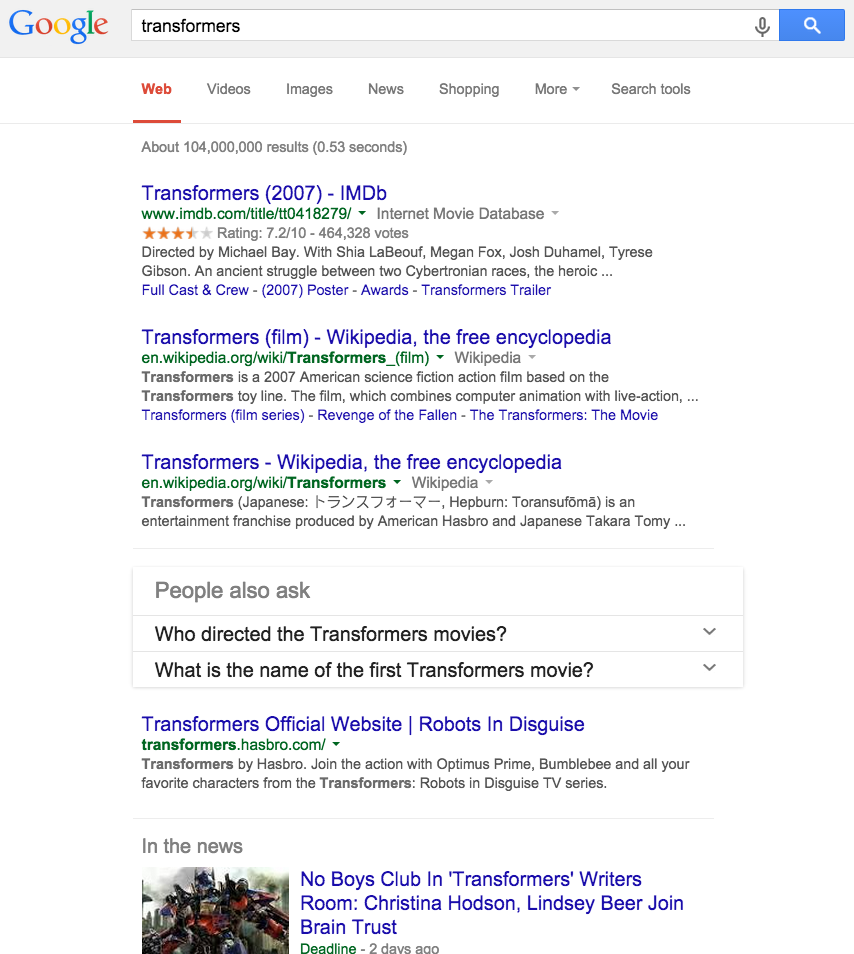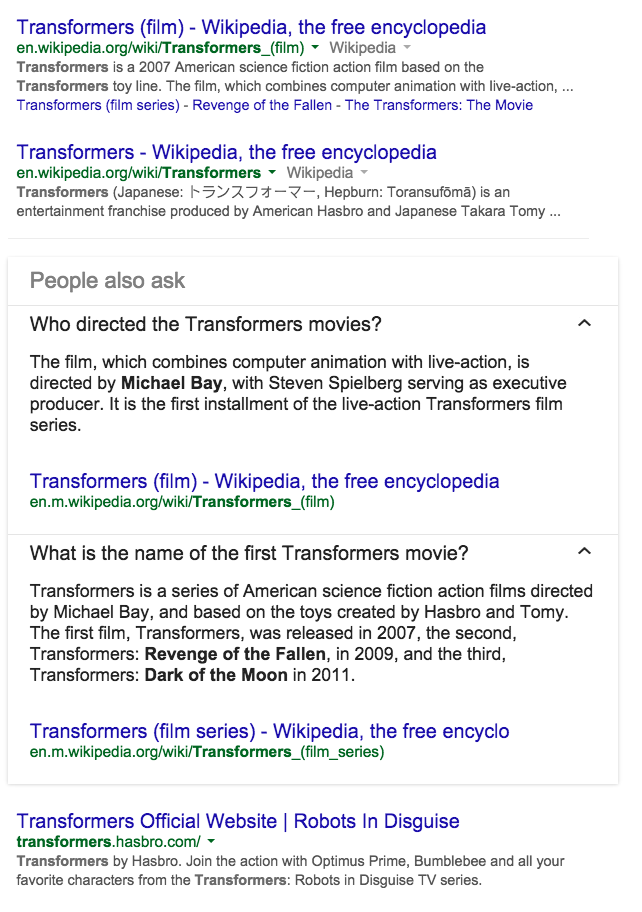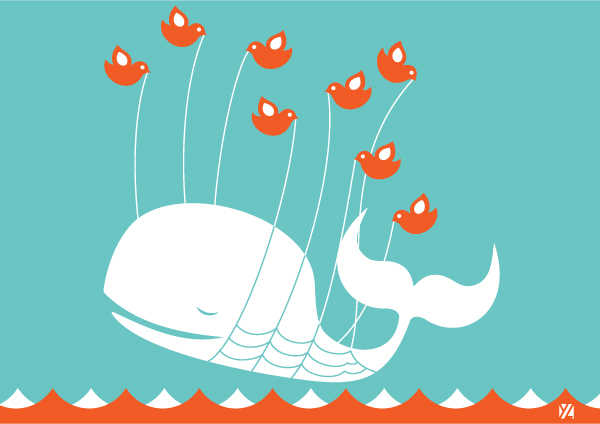
Calabria Pork Store
Sharav in the snow
Sharav at Madison Square

10K
I have tweeted nine thousand, nine hundred ninety-nine times, which is perhaps more times than any person should ever tweet. And when I publish this blog post and share a link to it on Twitter, it will be my ten thousandth tweet, which I’ll pin at the top of my twitter timeline for a while.
To commemorate the momentous occasion, I thought it might be worthwhile to share a few thoughts on what Twitter means to me, what I think is wrong with it, where I think it’s headed and how I think it could be improved. The problem is that, while I was able to articulate almost twenty specific ways to improve football last summer that were all related to a few general points, with Twitter I’ve got a ton of specific complaints and very limited ideas about how things could be improved.
Product, Platform, Community, Company
I think this is a good place to begin.
Twitter is a product, originally intended to take the idea of blogging and reduce it to SMS-length statements, that lets anybody access twitter.com, sign up for an account and start writing 140-character statements in boxes, that appear on a reverse-chronological timeline. Simple!
Twitter is a platform that lets developers create third-party applications that access the twitter.com service, which is why anyone can avoid going to the actual twitter.com website by using Twitterrific, Tweetbot and hundreds of other programs.
Twitter is a community where discussions happen – sometimes serious and sometimes frivolous, sometimes ephemeral and sometimes evergreen, sometimes friendly and sometimes bitter, sometimes in public and sometimes obscured behind anonymity or privacy, sometimes in real time and sometimes delayed over weeks and months.
Twitter is a company that develops Twitter the product but sometimes makes a mess of it or lets it fail, that relies on Twitter the platform but also tries to ensure that its own applications will be supreme, that nurtures Twitter the community but also bungles its task and alienates users… and that tries to make a profit for its shareholders.
What should Twitter be? It has to be all of the above things, but that’s in no way possible: you can’t be a consumer product while engineering a service that third-party developers, who also build competing consumer products, can support equally; you can’t be a platform with equal access while trying to make money from advertising; you can’t be a profitable company while nurturing and moderating and also policing a community; you can’t be a community while also improving (ie, changing) your product to be more like others and less like it once was.
Twitter and RSS
RSS is a daily part of my life, as it should be for everyone’s life. For those who don’t know what it is or quite understand it: once upon a time, whenever we wanted to know when something new was posted in a certain blog, we’d have to go to that blog’s home page. For those of us who had five friends with blogs, that meant we might be going to five websites every day. For those who had five hundred friends, rivals, professional contacts, divergent interests, communities, &c., that meant we might have spent the majority of our waking hours checking websites for updates, which was untenable.
But modern web publishing fixed that problem. Today, when you publish a blog post in WordPress, Tumblr, Blogger or any other major platform, your words go from a CMS into a database, and when someone comes to view the website, it’s not static, but rather auto-generated based on a front-end design (template, theme) and whatever entries are in that database. Meanwhile, it’s also possible to access just those words – the entries themselves – via a form of XML called RSS. This means bypassing the website itself (and its attendant theme/template/design, menus, comments, advertisements, javascript tracking codes and whatnot). RSS readers then let people aggregate and read only the content of many, many RSS feeds in a small fraction of the time that it would take to go to all of those websites.
There are a ton of ways to apply RSS, from simply keeping in touch with friends to staying on top of breaking news to integrating feeds from one site into another site, and lots of things around the internet are built to rely on RSS.
As a microblogging service, there’s a considerable overlap between Twitter and RSS. While an RSS feed contains just a URL and then some metadata like publication date, text snippet, title, &c. tweets also can contain those things – or can be just a brief statement with the equivalent metadata, or a picture or video with the equivalent metadata. So Twitter is in some ways comparable to RSS, but with more flexibility and more features.
Ideally, Twitter and RSS would both thrive and evolve semi-independently, but in reality, there’s been a slow shift away from RSS and towards Twitter because Twitter is sexier and more feature-rich and requires less investment in development and maintenance by publishers. For example, many journalists who cover breaking news stories are now using Twitter primarily or exclusively, instead of RSS, to get their news [1]. There are also sites that, like blogs, are updated frequently and that eschew the very logical RSS in favor of a somewhat less logical Twitter as a way of announcing regular changes (one example is Mozcast).
RSS is meant to be used by completists: that means you subscribe to an RSS feed with the intention of checking every single item that appears in that feed – though obviously sometimes this isn’t desirable, like when you’re on vacation or busy with other projects – and makes it possible by letting you mark seen items as “read” and leave unseen items as “unread” [2]. Twitter, while often used by completists (I am one, for example) does not intend for its service to be used this way, and intentionally makes it difficult to do so. Therefore, when Moz chooses Twitter over RSS for Mozcast, it is actually making their product more difficult to use for their intended audience, SEO professionals.
Google deserves a lot of the blame for harming RSS by not supporting it on google plus, which nobody uses anyway, and by killing Reader [3]. But when publishers make the decision to ignore RSS in cases where it would make sense, in favor of Twitter, that has the effect of damaging the longterm viability of both RSS and Twitter by making Twitter do something it’s not really meant to do.
Hashtag Abuse
Hashtags serve a very important purpose in the Twitter universe, and it’s no accident that they’ve been copied by many of the (more financially successful) companies and services that are similar to Twitter. Their role is to allow tweets to be filtered topically, so that anyone can find all the recent tweets about a certain topic. But their use is getting out of hand.
For example, consider the following tweet, which I’m making up but which is actually a composite of many tweets I see all the time:
It’s warm outside today. #weather #newyork #ny #nyc #new #york #city #newyorkcity #hot #summer #mylife #randomobservation #imhungry
Here’s another composite:
You should #read this important #article about the #Iran #nuclear #deal that #President #Obama is signing but which #Israel’s Prime Minister #Netanyahu and #Saudi #Arabia both oppose.
This practice is usually done by certain people: the kind who want to attract the most possible attention to themselves – well, really to their Twitter identities – by getting their tweets to show up in as many searches or filters as possible. And sometimes that’s not so bad, like when there is a breaking news situation and nobody knows what the “right” hashtag will be, so it does make sense for people with substantial updates to help everyone else find them. But overwhelmingly, this is done out of vanity.
Can we all agree that more than a couple hashtags per tweet is excessive, and that doing it more than a couple of times is insane, and that it degrades the experience of following someone on Twitter?
Unfortunately, Twitter gives users no way to mute tweets that contain more than a certain number of hashtags.
Follower spam
Because social media marketing exists, it is sometimes valuable for a company’s Twitter account to be followed by a lot of other Twitter accounts. And because of that, it sometimes makes sense for spammers to create a ton of gibberish, nonsensical Twitter accounts and sell them to marketers. But if Twitter gets to a point where 95% of its accounts are fake, then real people will flee the platform to competitors. So they make algorithms to detect fake accounts by things like creation date, IP address, velocity of followers, &c. And then the spammers get more sophisticated by… following real accounts and attempting to interact with them (or at least to make it appear like they’re interacting with them), so that their fake accounts seem credibly real.
This is why, of all the new followers on my Twitter account, probably two thirds are fake. It’s also why probably three quarters of my mentions are spam. I aggressively report these fake accounts to Twitter and they virtually all get removed within a few hours, which is why, going through my followers list, I see very few accounts or mentions that I think aren’t genuine.
I’m not very popular at all on Twitter – I have just around 500 followers. Imagine if I had 5,000 followers, or 50,000, and a majority of my new followers were fake: it would be a huge drain on my time and energy to check them all out and report the bad ones. This would lead me to stop looking into the new people who follow me, which would lead to decreased interaction with the real people. New Twitter users who followed me would be less likely to get a follow back or a “Welcome!” tweet or a timely retweet by my account. This is exactly what happens and it’s one of the reasons why new Twitter users often don’t stick around on the service.
Missing notifications
In part to deal with the problem of follower spam, Twitter uses an algorithm to determine when to notify me by email of new followers, and when not to notify me. Unfortunately, this algorithm is garbage, and it very frequently notifies me of bad accounts and fails to notify me of good accounts.
In one case, I was contacted by someone on a different social network who’d been following my Twitter account for some time. I looked at some of her tweets and it sounded like she had a lot of interesting things to say. But for how long had she been following me, and how had I missed the notification? I couldn’t easily find out, because Twitter had never sent me an email to let me know.
I understand that some people don’t like getting over-notified and that notification fatigue is a serious problem for social networks like Twitter that attract hundreds of millions of people who all have different tastes about how many emails to get and which emails to get. They do try to make it possible to adjust email notification settings, but this introduces some possibly unnecessary complexity, which scares away new users.
As a result, they’ve managed to alienate both intermediate to advanced users and novice users.
I don’t know if there’s a solution for this problem, but if there is, it might be something like notification profiles: check this box to get absolutely no email notifications ever, check this box to get the minimum number of notifications that Twitter thinks you might want, check this box to get the maximum number of notifications that Twitter thinks you might want, check this box to get every single possible notification, or check this box to adjust how strong the spam filtering should be on a few different metrics (don’t send follow notifications for users who signed up in the last seven days, for example).
Relationship with developers
I want to do as good a job as Ben Thompson did in explaining Twitter’s tumultuous relationship with its third-party developers, but I can’t, so you should just read what he wrote.
Instead, putting aside Twitter’s motivations, I’ll point out that the way Twitter the company squeezes its developers is extremely crappy for the users of Twitter the product. If Twitter wasn’t doing a lot in its power to prevent other companies from making a living by developing for it, Twitter the platform might be vastly more popular. There would be far more Twitter apps than there are today, and the apps would be far better.
I’m referring in particular to situations like the almost unsupported and abandoned Twitterrific Mac app, which was bad enough to convince me to switch to Tweetbot for Mac, where I’m a bit happier. If Iconfactory knew that they could build a business around improving this software, they’d do so. But they know the opposite, so they do the bare minimum to keep it running. And I’m referring to all kinds of missing app features, like integrated multi-account timelines, better localization, improved integration with competing services like Instagram, stuff like Tweetdeck used to do before Twitter bought it and ruined it, community-based apps that let users interact only with each other or only with people who aren’t blacklisted, apps specifically for journalists, apps specifically for celebrities, &c.
Monetization
As noted above, one of the reasons that Twitter has such a difficult time allowing and regulating third-party apps is that the service makes its money by advertising (specifically, native advertising).
I’ve spent years working for publishers who make their money in this way, and I don’t think it’s necessarily bad. In a bunch of cases, I actually think native advertising provides a win-win-win, which is the holy grail of monetization [4]. But mostly, native advertising is awful because it’s deceptive to users, because it distorts publishers by messing up their incentives and because it’s difficult to measure it and prove that it’s more effective than, say, display or affiliate advertising.
Twitter’s primary version of native advertising is called promoted tweets, and there seems to be a rule that promoted tweets must be awful, because in my experience they are invariably irrelevant, dumb, pointless – and a waste of money for advertisers, bandwidth for twitter, and time for me. I hate them (and if you think it’s just because I hate advertising, please see the previous paragraph). The best thing I can say about promoted tweets is that I only ever have to see them if I’m using one of Twitter’s own first-party apps or if I’m on twitter.com. Since I can avoid them by using third-party apps, I use third-party apps almost all the time. By the way, there are also promoted accounts, but I haven’t interacted with these.
And yet, I’d like Twitter to be able to make some money off of me. A tip jar is a stupid idea, but how about pursuing a freemium model like many other services do? This would mean, in essence, that Twitter is free to use, but if you want to use it certain ways, or if you want access to certain features, you’ll need to pay some money. Marco Arment wrote years ago about the desire to pay for free services so they don’t disappear (and so they don’t resort to doing annoying or sketchy things to make money) [5]. I sometimes share this desire, which is why I paid to support App.net, Feedly, &c.
How much money has Twitter ever made as a result of my membership and use (ie, what is the average lifetime value per user to Twitter of someone like me)? If I had to guess, I’d say with more than 90% certainty that it’s less than $10, and with 75% certainty I’d say that it’s less than $3. But if Twitter would allow me, I think it would be great to have the option of paying them $50 one time, or $10 per year, or $1 per month – in exchange for never having to interact with another advertisement on their platform during my paid-up period.
Why hasn’t Twitter done this? Are they afraid of alienating new users who are easily confused [6]? Do they not think it would be profitable? Have they simply not thought of the idea?
Monetizing their best users via a freemium model would allow Twitter to align its interests with those of its users (if I’m poor or stingy, I don’t have to pay and can keep seeing advertisements; if I hate the advertisements, I can pay and they’ll be taken away), its third-party developers (no need to coerce people to user twitter.com or Twitter’s own first-party apps means no need to make life miserable for app developers) and even advertisers (no business wants to advertise to people who hate the advertisements).
Community moderation
I’m not a video game player or a progressive political activist, so when progressive political activists tried to compel the video game industry to change the way it portrays women, I probably never should have heard about it. But instead, I was subjected to months and months of the most tendentious and spurious arguments from both sides about each other, and while this permeated many areas of my life that should have been insulated from it, ground zero of “gamergate” in my experience was Twitter.
This happened even though I didn’t follow any of the people who were directly involved, but rather because people that I did follow would retweet their side’s comments. And to this day, I continue hearing from both sides about harassment, doxxing, death threats, bullying and all manner of immature stupidity that the other side has supposedly done. And critically, there’s an insane amount of pressure on Twitter to… well, it’s unclear what Twitter is supposed to do.
Should Twitter simply provide a platform to let people speak, ban users who have promoted specific acts of violence because incitement to violence is illegal, and stay out of its users’ squabbles?
Should Twitter build tools that allow people to filter each other out, block each other individually or en masse, blacklist or whitelist each other, mute topics or hashtags?
Should Twitter declare that “harassment” is banned, but give only the vaguest definition of “harassment,” and then allow users to report each other for “harassment” and suspend accounts of those who were reported, with only the most tenuous justification?
Personally, I hate that I’ve had to mute (but not block) a few Twitter accounts because people I follow kept retweeting them, and I hate that some accounts I follow have been suspended, and I hate that other people are using automated block lists against each other, and I hate that other people have left Twitter because of all of this. I certainly don’t know what Twitter should do about it, but I do know that they should pick an approach and follow through with it.
Unfortunately, instead of doing one thing or another thing or a third thing, they appear to have decided to take a bit from Column A, a bit from Column B and a bit from Column C. And this has led to both sides losing, and innocent bystanders losing as well.
Two factor authentication
Here’s something I can keep short and sweet. Twitter’s implementation of two factor authentication is non-standard and sub-par.
Good online services like, to pick two examples more or less at random, Slack and Github, allow their users to authenticate via third-party apps like Authy or Google Authenticator. But for some reason, Twitter requires me to use either SMS or the Twitter app for iOS. Using SMS for something like this is a terrible idea because it locks exactly one telephone number to exactly one Twitter identity (you can’t have multiple numbers per account, and you can’t have multiple accounts per number), and using the Twitter app means that I have to keep it on my iPhone and allow it to send me notifications.
Twitter really dropped the ball on this.
Product differentiation
I thought I’d save the best for last.
Though lots and lots and lots of services now have microblogging-like features, and Twitter wasn’t the first microblogging service, Twitter is almost synonymous with that medium in people’s minds. But some of the other things Twitter can do are great, such as including Twitter cards, geolocation, photos, videos, retweeting, quoting (retweeting with an additional comment), @ mentioning someone, hashtagging.
Many, many, many people who use other services like Instagram would probably be better served by using Twitter for the same, or similar, things (after all, Instagram is really just Twitter except limited to exactly one square picture per post), since even though Twitter may have fewer users, it is more widely used, with a more diverse and influential user base, and because more applications are built on top of the Twitter platform. But Twitter does an embarrassingly bad job of explaining what it is and why it’s supposed to exist.
Twitter’s “strategy statement” is, infamously, one of the worst statements about itself that a company has ever tried to transmit. Try reading it:
Reach the largest daily audience in the world by connecting everyone to their world via our information sharing and distribution platform products and be one of the top revenue generating Internet companies in the world.
It sounds like it was written over the course of a weeklong meeting by a lawyer, a biz dev director and a software engineer locked in a conference room together. “World … world … world.” Run-on sentence. Pronoun disagreement. Missing hyphen. Exceeds 140 characters.
Reading it makes me want to look at this:
Why can’t Twitter figure out what it wants to be? For every reason that I’ve mentioned above and that I will mention below, but also because of a lack of vision. Think about the vision of social networks like Facebook, Instagram and LinkedIn. They’ve all changed radically from when they were small and insignificant, but they’ve all become important in some ways. Now think about the vision of social networks like MySpace and Friendster. Who was supposed to use the latter two, and for what? That’s why the latter two networks were abandoned as soon as their users had better options (and it’s why google plus never took off, and never will).
As Steve Jobs observed, focus is about saying no to a thousand good ideas, so you’ll be able to say yes to the one great idea. Twitter doesn’t lack good ideas, but by trying to do a little bit of everything, by trying to be a little bit of everything, it’s running the risk of being nothing.
The worst part about this is that Twitter is a publicly traded company, which means they’re reporting to Wall Street and to the public on minutiae of their business like quarterly revenue, plans, targets, &c., which is why they have to change course every few months. And it means that the people in their C-suite are public officials who need to maintain the confidence of the investor class and even of regular users, which is why they can’t recruit and retain solid leadership that can work towards long term goals.
Mark Zuckerberg has prevented most of these problems at Facebook, despite taking the company public, by largely maintaining control over what he created. The lesson here is that sometimes it makes sense to have a hierarchical decision-making structure, with one person at the top who bears ultimate authority and responsibility, to make sure that things are effective and efficient, and that it’s extremely important for that person to be legitimate. Unfortunately, the lesson that Twitter seems to be hearing is, Make your product more like Facebook’s.
That’s why Twitter is attempting to ruin the idea of a simple and reliable reverse-chronological timeline that shows every tweet of every account its users follow: first by breaking tweets into three tabs (Tweets, the default; Tweets & replies; Photos & videos), second by showing “While you were away” instead of everything, third – this hasn’t happened yet – by actually making it very difficult or impossible to see every tweet in one’s timeline.
Advertisers love these shenanigans on Facebook, and they’ll love them on Twitter too. Obliterating the timeline is a way of reforming user behavior away from completism and towards curation. Under a completist paradigm, I decide what I want to follow and then I’m presented with all of it (and if I miss something, I can always scroll back and back and back to find it). Under a curation paradigm, I give Twitter some hints (I like Barack Obama, I like Kim Kardashian, I like Robert Griffin) and then Twitter decides what I’ll see and when I’ll see it. But of course, at that point, it won’t entirely be Twitter deciding. It will be advertisers. And it will be over for me and a lot of other core people who love Twitter the product, Twitter the platform and Twitter the community… and tolerate Twitter the company.
Further reading
The following three articles all appeared while I was writing this blog post. I don’t particularly agree with any of them, but I think it’s telling that Twitter is very much a topic of discussion, not just right now and not just on Twitter, because lots of people care about Twitter a lot.
- .@Twitter. Who Do You Think You Are?
- How Twitter Lost the Stream Wars
- Twitter Takes Down Background Images, Doesn’t Explain Why
Accounts I mentioned
Here are (I think) all of the Twitter accounts I mentioned in this post:
App.net, ATP, Authy, Barack Obama, Ben Thompson, Blogger, Casey Liss (in spirit), Facebook, Farhad Manjoo, Feedly, Friendster, Github, Google, Google Reader, Iconfactory, Instagram, John Gruber, Kim Kardashian, LinkedIn, Marco Arment, Mark Zuckerberg, Moz, Mozcast, MySpace, Overcast, Robert Griffin, John Siracusa, Slack, Slate, Stratechery, The Talk Show, Tumblr, Tweetbot, Twitter, Twitterrific, WordPress.
And here’s mine. Happy tweeting!
References
| ↑1 | I seem to recall that Farhad Manjoo wrote about this in an article for Slate, some time around 2012, though I’m having trouble locating the article now. |
|---|---|
| ↑2 | Though he may not have invented the term “completist,” I first heard it from John Siracusa on the Accidental Tech Podcast. |
| ↑3 | Feedly is trying to reverse that, and everyone should buy a Feedly Pro account to support their work. |
| ↑4 | Examples: podcast sponsorships on shows like John Gruber‘s The Talk Show and Accidental Tech Podcast that legitimately inform me about products I sometimes end up buying; or certain “custom” articles on my previous employer’s websites that helped people learn about new medical treatments. |
| ↑5 | Though this may make it seem like Marco opposes freemium services, that isn’t the case: freemium is how he makes money from Overcast. |
| ↑6 | The image of the Twitter novice, who’s apparently in a state of permanent befuddlement, can not possibly be accurate, since we were all Twitter novices at one time. |
Popular movies I haven’t seen in the last 15 years
A few months ago, Marco Arment listed which of the most popular movies he had seen in the past fifteen years.
This amused me because I’ve also notoriously not seen a lot of popular movies, so I was curious to find out whether I’d seen more or fewer of them than he had.
Below is the list, which is taken from all of the “best picture” Oscar nominees since 2000, and the top ten highest grossing films in that time period.
- If the movie name is bold, I watched it and stayed awake through it
- If the movie name is in italics, I strongly believe that I watched it, but I have no memory of it, probably because I fell asleep in the middle (or the beginning)
- If the movie name has no special formatting, I didn’t watch it
2000
Traffic
Gladiator
Crouching Tiger, Hidden Dragon
What Women Want
Meet the Parents
Chocolat
Erin Brockovich
Mission: Impossible II
Cast Away
Dinosaur
How the Grinch Stole Christmas
The Perfect Storm
X-Men
What Lies Beneath
2000 total watched: 1 of 14
2001
A Beautiful Mind
Planet of the Apes
Monsters, Inc.
Ocean’s Eleven
Gosford Park
In the Bedroom
The Lord of the Rings: The Fellowship of the Ring
Moulin Rouge
Harry Potter and the Philosopher’s Stone
Shrek
Pearl Harbor
The Mummy Returns
Jurassic Park III
Hannibal
2001 total watched: 2 of 14
Cumulative total watched: 3 of 28
2002
Gangs of New York
My Big Fat Greek Wedding
Spider-Man
Star Wars Episode II: Attack of the Clones
Men in Black II
Die Another Day
Minority Report
Chicago
The Hours
The Lord of the Rings: The Two Towers
The Pianist
Harry Potter and the Chamber of Secrets
Signs
Ice Age
2002 total watched: 2 of 14
Cumulative total watched: 5 of 42
2003
Lost in Translation
Finding Nemo
The Matrix Reloaded
The Matrix Revolutions
The Lord of the Rings: The Return of the King
Master and Commander: The Far Side of the World
Mystic River
Seabiscuit
Pirates of the Caribbean: The Curse of the Black Pearl
Bruce Almighty
The Last Samurai
Terminator 3: Rise of the Machines
X2
Bad Boys II
2003 total watched: 1 of 14
Cumulative total watched: 6 of 56
2004
Ray
The Incredibles
Ocean’s Twelve
Million Dollar Baby
The Aviator
Finding Neverland
Sideways
Shrek 2
Harry Potter and the Prisoner of Azkaban
Spider-Man 2
The Passion of the Christ
The Day After Tomorrow
Meet the Fockers
Troy
Shark Tale
2004 total watched: 1 of 15
Cumulative total watched: 7 of 71
2005
Brokeback Mountain
Crash
Munich
Crash
Star Wars Episode III: Revenge of the Sith
Capote
Good Night, and Good Luck
Harry Potter and the Goblet of Fire
The Chronicles of Narnia: The Lion, the Witch and the Wardrobe
War of the Worlds
King Kong
Madagascar
Mr. and Mrs. Smith
Charlie and the Chocolate Factory
Batman Begins
Hitch
2005 total watched: 3 of 15
Cumulative total watched: 10 of 86
Cumulative total watched, but fell asleep: 1 of 10
2006
The Departed
Babel
Little Miss Sunshine
Casino Royale
Cars
Letters from Iwo Jima
The Queen
Pirates of the Caribbean: Dead Man’s Chest
The Da Vinci Code
Ice Age: The Meltdown
Night at the Museum
X-Men: The Last Stand
Mission: Impossible III
Superman Returns
Happy Feet
2006 total watched: 2 of 15
Cumulative total watched: 12 of 101
Cumulative total watched, but fell asleep: 2 of 12
2007
No Country for Old Men
Juno
There Will Be Blood
Michael Clayton
Ratatouille
I Am Legend
Atonement
Pirates of the Caribbean: At World’s End
Harry Potter and the Order of the Phoenix
Spider-Man 3
Shrek the Third
Transformers
The Simpsons Movie
National Treasure: Book of Secrets
300
2007 total watched: 4 of 15
Cumulative total watched: 16 of 116
Cumulative total watched, but fell asleep: 3 of 16
2008
Slumdog Millionaire
Milk
Indiana Jones and the Kingdom of the Crystal Skull
The Dark Knight
Quantum of Solace
WALL-E
The Curious Case of Benjamin Button
Frost/Nixon
The Reader
Kung Fu Panda
Hancock
Mamma Mia!
Madagascar: Escape 2 Africa
Iron Man
The Chronicles of Narnia: Prince Caspian
2008 total watched: 3 of 15
Cumulative total watched: 19 of 131
Cumulative total watched, but fell asleep: 5 of 19
2009
District 9
Precious
The Hangover
A Serious Man
The Hurt Locker
Avatar
The Blind Side
An Education
Inglourious Basterds
Up
Up in the Air
Harry Potter and the Half-Blood Prince
Ice Age: Dawn of the Dinosaurs
Transformers: Revenge of the Fallen
2012
The Twilight Saga: New Moon
Sherlock Holmes
Angels & Demons
2009 total watched: 4 of 18
Cumulative total watched: 23 of 149
Cumulative total watched, but fell asleep: 6 of 23
2010
The Social Network
Inception
Black Swan
Toy Story 3
The Kings’ Speech
127 Hours
The Fighter
The Kids Are All Right
True Grit
Winter’s Bone
Alice in Wonderland
Harry Potter and the Deathly Hallows Part 1
Shrek Forever After
The Twilight Saga: Eclipse
Iron Man 2
Tangled
Despicable Me
How to Train Your Dragon
2010 total watched: 3 of 18
Cumulative total watched: 26 of 167
Cumulative total watched, but fell asleep: 7 of 26
2011
Extremely Loud and Incredibly Close
The Artist
The Descendants
The Help
Hugo
Midnight in Paris
Moneyball
The Tree of Life
War Horse
Harry Potter and the Deathly Hallows Part 2
Transformers: Dark of the Moon
Pirates of the Caribbean: On Stranger Tides
The Twilight Saga: Breaking Dawn, Part 1
Mission: Impossible — Ghost Protocol
Kung Fu Panda 2
Fast Five
The Hangover Part II
The Smurfs
Cars 2
2011 total watched: 1 of 19
Cumulative total watched: 27 of 186
Cumulative total watched, but fell asleep: 8 of 27
2012
Life of Pi
Skyfall
Argo
Amour
Beasts of the Southern Wild
Django Unchained
Les Misérables
Lincoln
Silver Linings Playbook
Zero Dark Thirty
The Avengers
The Dark Knight Rises
The Hobbit: An Unexpected Journey
Ice Age: Continental Drift
The Twilight Saga: Breaking Dawn, Part 2
The Amazing Spider-Man
Madagascar 3: Europe’s Most Wanted
The Hunger Games
Men in Black 3
2012 total watched: 1 of 19
Cumulative total watched: 28 of 205
Cumulative total watched, but fell asleep: 8 of 28
2013
Gravity
Her
The Wolf of Wall Street
American Hustle
Monsters University
12 Years a Slave
Captain Phillips
Dallas Buyers Club
Nebraska
Philomena
Frozen
Iron Man 3
Despicable Me 2
The Hobbit: The Desolation of Smaug
The Hunger Games: Catching Fire
Fast & Furious 6
Man of Steel
Thor: The Dark World
2013 total watched: 4 of 18
Cumulative total watched: 32 of 223
Cumulative total watched, but fell asleep: 10 of 32
2014
American Sniper
Boyhood
Interstellar
The Grand Budapest Hotel
Birdman
The Imitation Game
Selma
The Theory of Everything
Whiplash
Transformers: Age of Extinction
The Hobbit: The Battle of the Five Armies
Guardians of the Galaxy
Maleficent
The Hunger Games: Mockingjay, Part 1
X-Men: Days of Future Past
Captain America: The Winter Soldier
The Amazing Spider-Man 2
Dawn of the Planet of the Apes
2014 total watched: 5 of 18
Cumulative total watched: 37 of 241
Cumulative total watched, but fell asleep: 13 of 37
So, of 241 wildly popular and/or highly esteemed movies from 2000 to 2014, I’ve seen 37, which is 15%. Of these, I’ve fallen asleep 35% of the time.
People Also Ask
Here’s a pretty unusual search result that I noticed today during an office conversation about animated series we all watched during the 1980s (except those of us who were transitioning from zygote to embryo at that time):

“People also ask” is pretty strange! The two arrows are clickable, and here’s what they look like when clicked:

So it’s clear that this is something similar to the related searches box that nearly always appears at the bottom of search result pages. In this case, the SERP still does have related searches [1]:

But what’s different? My query was for [keyword], a head term, and the related searches are for body terms: [keyword] + [games], [keyword] + [characters], [keyword] + [wiki], &c.
On the other hand, the “people also ask” section attempts to choose a few semantic questions, to answer them and to provide differentiating links to two different Wikipedia pages.
On the balance, this is not one of the better search results I’ve seen recently, for a few reasons:
- The “Transformers” that I had in mind was the television series from the 1980s, not the movie. But practically every link on this page is to information about the movie.
- There’s another kind of “transformers.” They’re electrical appliances upon which we all rely every day. They show up as a related search (electric transformers), but there’s no link on this search result that leads directly to any actual information about that kind of transformers.
- “People also ask” seems fairly hacked together and out of place.
I bet “People also ask” doesn’t last for very long, at least in its current form.
References
| ↑1 | The final three search results, by the way, are news results, not organic, which you can tell from the very thin and almost invisible gray line |
|---|
People are still calling it the iWatch
Please stop.
Bad SERP: basketball diameter
Basketball is happening around me (good news: I am not in last place in my office bracket pool thing) and I got curious, for some reason, about the dimensions of a basketball. So I asked Google: basketball diameter.

Most of this SERP is junk, but the first organic result is actually perfect, answering my question above the fold (and they even included the answer in the meta description, so I didn’t even have to click at all if I didn’t want to):
A standard NBA basketball is 9.43 to 9.51 inches in diameter, or 29 5/8 to 29 7/8 inches in circumference. It is inflated to a pressure of 7.5 to 8.5 pounds.
But instead of trusting their own organic search ranking algorithm to provide searchers with the best answer, Google scraped the #2 result to give me an incorrect answer: I specifically asked for the diameter of a basketball; what appeared above the search results was information about a basketball’s circumference. This is a very bad experience.
Google should stop scraping publishers’ sites to put answers directly in search results in cases where the nature of the question is strictly factual and where the facts would actually be wrong.
Pharma marketing 101
Shire, Maker of Binge-Eating Drug Vyvanse, First Marketed the Disease:
The retired tennis player Monica Seles spent this month making the rounds of television talk shows… to share her personal struggle with binge eating…
binge eating is a real medical condition…
Ms. Seles is a paid spokeswoman for Shire, which late last month won approval to market its top-selling drug, Vyvanse, to treat binge-eating disorder, a condition that once existed in the shadow of better-known disorders like anorexia and bulimia but was officially recognized as its own disorder in 2013 by the American Psychiatric Association.
As Shire introduces an ambitious campaign to promote Vyvanse but also to raise awareness about the disorder, some are saying the company is going too far to market a drug, a type of amphetamine, that is classified by the federal government as having a high potential for abuse…
The company helped put another once-stigmatized condition — attention deficit hyperactivity disorder — on the medical map and made billions of dollars from the sale of drugs, like Vyvanse and Adderall, to treat it…
Suppose you are a pharmaceutical company. You invest millions, billions, of dollars in laboratories and chemists, and at the end of a very long process, the outcome is a new drug. Let’s call it, for fun, Mezuyafir. You then have to figure out what conditions that drug can treat.
If it cures a diagnosable disease, that’s good! But if it just changes the chemical composition of people’s brains to make them more happy, more docile, more virile or more focused, that’s even better.
What you now need to do is come up with a medical condition that matches with your new drug. In some cases, the condition may be real and serious; in other cases the condition might be real but not very serious; in other cases the condition will inevitably be frivolous. Let’s call it Magafitis.
Then, though it is legal under many circumstances in the United States to market your new drug directly to consumers, you actually market the hell out of the condition with lots of crass commercial advertisements that advise people to “Talk to your doctor about” whatever problem that they never realized was a problem.
Hey, Magafitis can be serious! It’s a serious issue! Someone knows someone who knows someone who spent a year in bed recovering from Magafitis! And there is a whole forum on the internet for people to share stories and tips about how to find a doctor who takes Magafitis seriously.
Advertising works, so lots and lots and lots and lots of people are going to start asking their doctors about that issue. And the doctors out there – bless them all – are very good at prescribing drugs.
Suppose two thirds of the people who talk to their doctors about Magafitis get prescriptions to treat it. If your new drug Mezuyafir is the only one available that treats Magafitis, the condition that you just made up, then millions of people are going to start taking it, and you’re going to become very rich.
Welcome to pharma marketing.
- « Previous Page
- 1
- …
- 37
- 38
- 39
- 40
- 41
- …
- 59
- Next Page »













